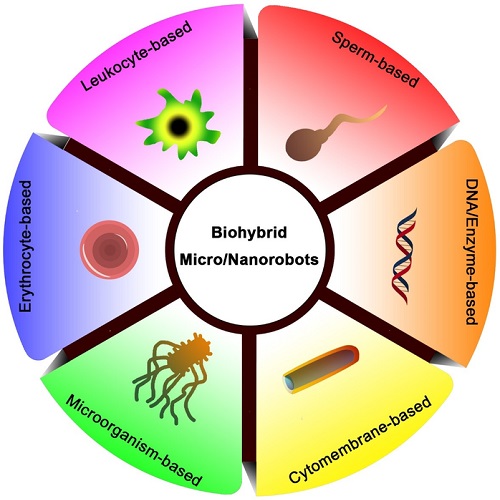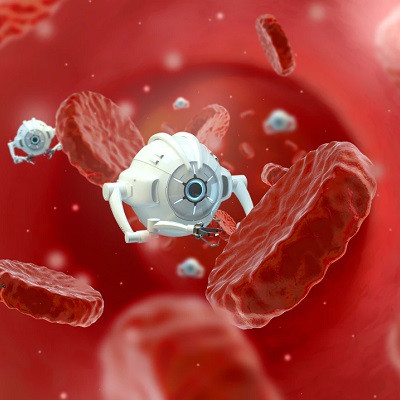Scientists at the Beijing Institute of Technology, China recently reviewed a paper which summarised recent advancements in the use of intelligent biohybrid micro- and nanorobots for medical applications. The review paper, published in Cyborg and Bionic, highlighted how these robots with living parts are designed to perform tasks, including the effective delivery of drugs to body tissues.
The biohybrid microrobots have living biological and non-living components. Usually an artificial carrier swims or crawls to transport living components to where they are needed to perform tasks in the human body. These robots can also be remote controlled to perform a biochemical operation with high precision.
In their review, the scientists analysed the potential uses of biohybrid robots. Beside cancer treatment, they can also carry out other small-scale tasks, such as microsurgery of cells, assisted fertilisation, and tissue engineering. The scientists reviewed different biohybrid robots, including those with different sizes. They range in size from about one to 20μm, with the variation largely stemming from their components. For example, a nano, DNA-based robot can deliver the blood-clotting agent thrombin to stop the flow of blood to a cancer tumour cell; a micro, sperm-based robot can deliver the anticoagulant heparin to treat a circulatory system disease.

Scientists from Beijing Institute of Technology reviewed progress and perspectives of biohybrid micro- and nanorobots for intelligent drug delivery.
Despite their advantages, much more research is needed around biohybrid robots in humans. The team hopes to carry out research where novel biological components are incorporated into biohybrid robots, to discover how the immune system responds to robots when introduced in the human body.
Another challenge includes the efficiency of manufacturing the tiny, non-living carriers. Future research and development will likely yield new ways of transporting the biological parts, such as magnetic fields or light; advancements in techniques for fabricating the non-living parts; and enhanced imaging techniques such as magnetic resonance imaging (MRI) and magnetic particle imaging. The researchers expect biohybrid robots to become even more sophisticated and specialised for carrying out complex medical tasks.
Read the original article on Drug Target Review.
